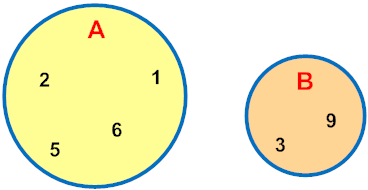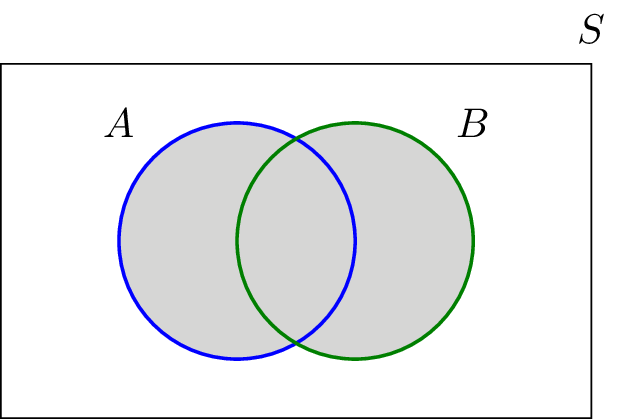Definition of Intersection of Sets:
Intersection of two given sets is the largest set which contains all the elements that are common to both the sets.
To find the intersection of two given sets A and B is a set which consists of all the elements which are common to both A and B.
The symbol for denoting intersection of sets is ‘∩‘.
For example:
Let set A = {2, 3, 4, 5, 6}
and set B = {3, 5, 7, 9}
In this two sets, the elements 3 and 5 are common. The set containing these common elements i.e., {3, 5} is the intersection of set A and B.
The symbol used for the intersection of two sets is ‘∩‘.
Therefore, symbolically, we write intersection of the two sets A and B is A ∩ B which means A intersection B.
The intersection of two sets A and B is represented as A ∩ B = {x : x ∈ A and x ∈ B}
Solved examples to find intersection of two given sets:
1. If A = {2, 4, 6, 8, 10} and B = {1, 3, 8, 4, 6}. Find intersection of two set A and B.
Solution:
A ∩ B = {4, 6, 8}
Therefore, 4, 6 and 8 are the common elements in both the sets.
Some properties of the operation of intersection
(i) A∩B = B∩A (Commutative law)
(ii) (A∩B)∩C = A∩ (B∩C) (Associative law)
(iii) ϕ ∩ A = ϕ (Law of ϕ)
(iv) U∩A = A (Law of ∪)
(v) A∩A = A (Idempotent law)
(vi) A∩(B∪C) = (A∩B) ∪ (A∩C) (Distributive law) Here ∩ distributes over ∪
Also, A∪(B∩C) = (AUB) ∩ (AUC) (Distributive law) Here ∪ distributes over ∩
Notes:
A ∩ ϕ = ϕ ∩ A = ϕ i.e. intersection of any set with the empty set is always the empty set.





